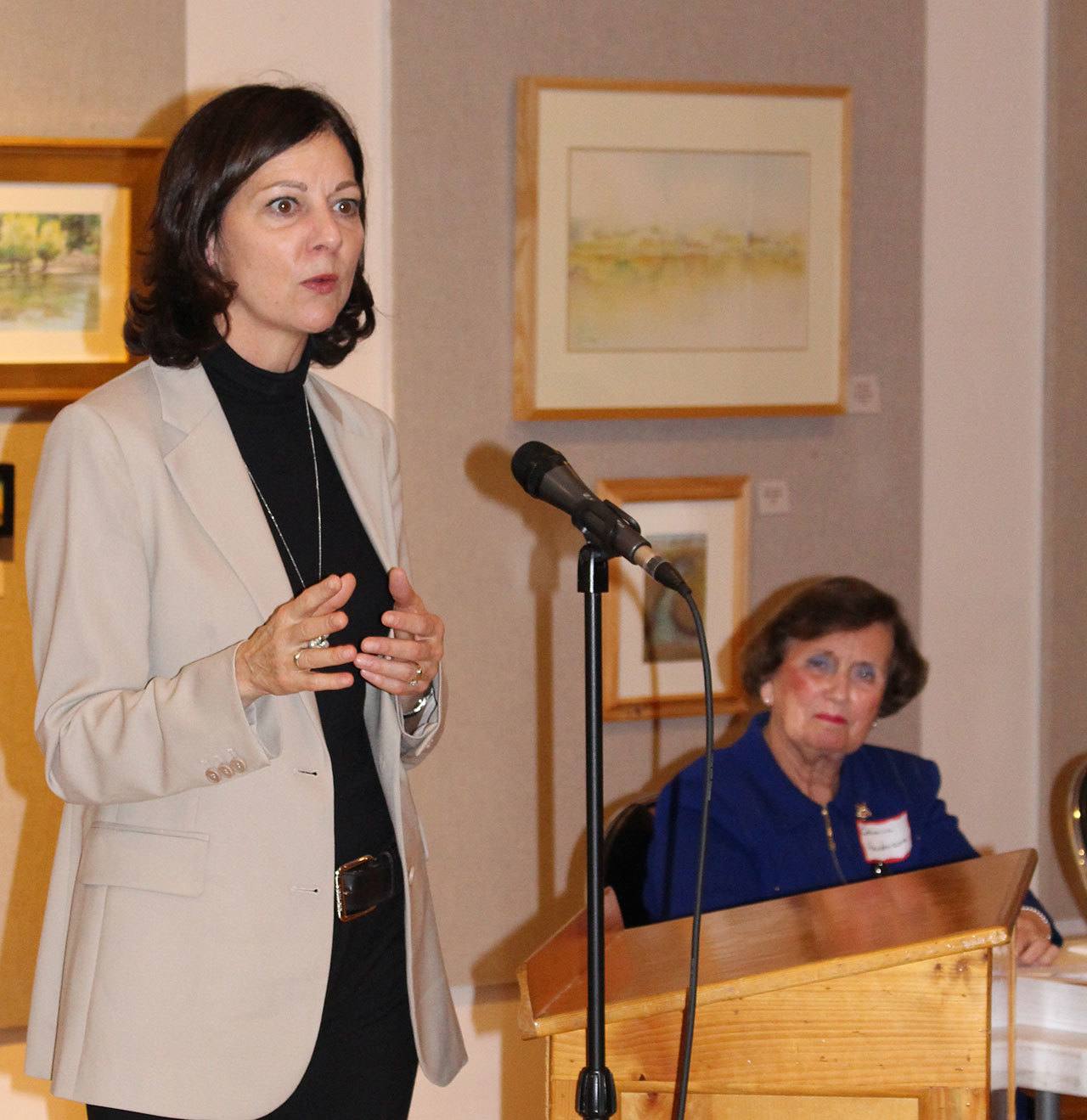Orcas Medical Center is at a crossroads.
After Island Hospital announced it would not be renewing its contract, slated to end Dec. 31, the Orcas Medical Foundation Board began looking at options for new management. After determining that a long-term relationship, technology, continuity of care and constant care were the board’s top priorities, it approached University of Washington Medicine – Neighborhood Clinics about a partnership.
Close to 200 people gathered in the Orcas Center Madrona Room on Nov. 16 to hear about the possible transition from UW representatives and the OMF board.
“We want to ensure and provide a thriving medical center for many years to come. We needed an alliance with an institution not individuals,” said Catherine Henderson, OMF board president. “UW has high standards, resources for islanders and telemedicine. Technology for medicine is the future.”
Island Hospital, which is based out of Anacortes, has agreed to extend it management contract to July 1, 2017 to facilitate a transition to UWNC. The major roadblock is money.
There are initial costs associated with the switch-over. Because all of UW’s patient records and medical histories are stored electronically, between $300,000 and $350,000 will need to be spent on converting paper files to electronic versions. In addition, the medical center loses $250,000 to $300,000 per year, which is a deficit that UW will not absorb.
“It’s because of scale. Orcas will never meet the minimum size for a clinic to support itself,” said Debra Gussin, executive director of Neighborhood Clinics. “There is a limited number of people to serve. Orcas Medical Center is 10 times smaller than what a UW clinic would normally operate … My advice is that it needs to be stably funded – not on a donation basis.”
The medical foundation must raise $750,000 by Jan. 15 in order for UW to consider contract negotiations. That funding will only cover the initial transition costs and a one-year deficit. For long-term funding, the board is considering putting a taxing district initiative on the November 2017 ballot.
The OMF board has already raised $200,000. There is an account set up at Key Bank, and board members will be conducting outreach in the coming weeks.
If the total amount of money is not raised, all donations will be returned. And what happens to OMC if that happens is up in the air.
UW Medicine, based out of Seattle, has four hospitals, Airlift NW and a teaching facility. UW Neighborhood Clinics is a network of 12 community-based clinics located throughout the Puget Sound region with locations as far north as Smokey Point and as south as Olympia. The clinics provide a range of primary care and secondary care services, from pediatrics to geriatrics. According to Gussin, UW Medicine is ranked no. 1 for primary in the United States, and focuses on “team-based care.”
She told the audience that patients can still use specialists at Island Hospital if they prefer, and UW works with GroupHealth, which is the affordable care act provider for San Juan County. Gussin also acknowledged that many islanders already use UW specialists.
Initially, a potential contract with UW would only pay for current staffing levels (one MD, one ARNP plus nurses and administrative) and would not provide 24/7 care.
“There are so few providers that asking them to be on that many rotations will drive them out,” Gussin said. “It’s not the same as it was 20 years ago. We ask a lot of our providers. It’s a high stress, high burn-out job.”
She hopes that phone conferences and emailing doctors can help with some after-hours care, but it would ultimately need to be addressed in full at a later date. Many in the audience asked about combining OMC with Orcas Island Family Medicine and Orcas Family Health Center.
“UW: please resolve the issues between our practices and bring them together,” said Art Lange.
Henderson asked for a show of support for UW management and most audience members raised their hands. When queried about the duration of a contract, Gussin said, “It would be lengthy. We don’t pop in and out of communities.”



